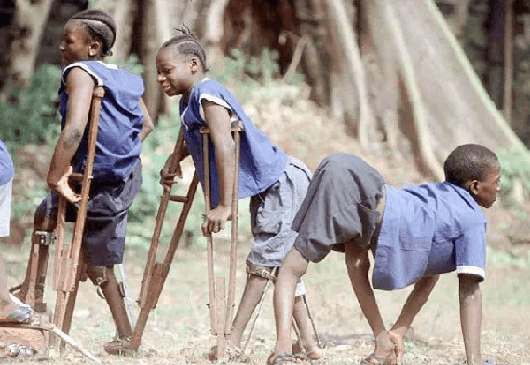
A highly contagious disease, especially among children, polio attacks the nervous system and can lead to spinal and respiratory paralysis, which can also result in death. The disease has prehistoric origins, with ancient Egyptian images showing children with withered limbs walking with sticks.
British doctor, Michael Underwood in 1789, did the first known clinical description of polio. Thereafter, German physician, Jakob Heine, formally recognised it as a condition in 1840.
Deadly outbreaks
With frequent epidemics in the late 19th and early 20th centuries, polio became the most feared disease in the world. In 1916, a major outbreak in New York City claimed over 2000 lives. In 1952, the worst recorded outbreak in the US killed over 3000 people. For those who managed to survive the disease, they were faced with lifelong consequences, such as deformed limbs, for which they had to resort to leg braces, crutches and wheelchairs. Some also had to use breathing devices, such as the iron lung, an artificial respirator that was specifically invented for the treatment of polio patients.
Becoming a global menace by the mid-20th century, the poliovirus had paralysed or killed over half a million people every other year. The absence of a cure, coupled with rising epidemics, necessitated the urgent need for a vaccine. In 1949, the world recorded a breakthrough, when John Enders, Thomas Weller and Frederick Robbins successfully cultivated the poliovirus in human tissue at Boston Children’s Hospital. Their ground-breaking work was recognised with the 1954 Nobel Prize.
First vaccine
US physician, Jonas Salk, created the successful vaccine in the 1950s and went on to test it on himself and members of his family in 1953. A year later, it was tested on 1.6 million children in Canada, Finland and the USA. With the announcement of the results on 12 April 1955, Salk’s polio vaccine became licensed on the same day. By 1957, annual cases witnessed a decline from 58000 to 5600. As at 1961, only 161 cases remained.
Salk recognised the importance of an equitable access to his inactivated polio vaccine (IPV) and understood that elimination efforts would not achieve the desired goal, without universal low-cost or no-cost vaccination. Six pharmaceutical companies were licensed to produce IPV, and Salk did not profit from sharing the formulation or production processes. During an interview in 1955, when asked who owned the patent for IPV, he replied: “Well, the people, I would say. There is no patent. Could you patent the sun?”
Oral vaccine
Microbiologist, Albert Sabin would later develop a second type of polio vaccine, the oral polio vaccine (OPV). Sabin’s vaccine was live-attenuated (using the virus in weakened form) and could be given orally, as drops or on a sugar cube. Due to the wide usage of Salk’s vaccine in the late 50s, the United States’ interest in testing this new type of vaccine was low. Sabin also tested his experimental vaccine on himself and his family, though he had to embark on further fieldwork for larger-scale trials.
The oral vaccine, due to its ease of administration, became the best option for mass vaccination campaigns. While Hungary began to use it in December 1959, Czechoslovakia started using it in early 1960 and became the first country in the world to eradicate the disease.
The OPV was administered in nationwide immunisation programmes in Cuba in 1962. It had an added benefit that paved the road to eradication. While IPV protected the vaccinated child, it did not stop the poliovirus from spreading between children. Alternatively, the OPV interrupted the chain of transmission, making it a powerful vaccine to stop polio outbreaks in their tracks.
Massive campaigns
In 1979, Rotary International began a campaign to immunise six million children in the Philippines. In 1988, the World Health Assembly passed a resolution to eradicate polio in order to achieve its permanent reduction to zero. That same year, the Global Polio Eradication Initiative (GPEI) was launched. The Assembly’s work towards attaining that milestone was supported by the contributions of Rotary International which also wanted to ensure that the eradication of smallpox was sustained to ensure that no child was needlessly paralysed for life anymore.
Enormous donations by different countries were combined with international initiative and assistance, with WHO working to support the global collaboration. With WHO’s backing, vaccine production was also expanded globally, with substantial capacity developed in countries, including India and Indonesia. In 1995, mass vaccination campaigns took place in China and India
By 2003, polio remained endemic in only six countries – and by 2006, that number had dropped to four. The 21st century witnessed further improvements, with cases brought down by more than 99 per cent worldwide in less than two decades.










